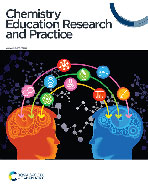Analysis of students’ diagrams of water molecules in snowflakes to reveal their conceptual understanding of hydrogen bonds
Abstract
Recent studies have reported a growing trend of using student-generated diagrams for assessment in science teaching and research. However, many educators tend to use diagrams to explore students’ perceptions of scientists and their work rather than explore conceptual understanding of abstract concepts. In this study, we used diagrams to investigate students’ conceptual understanding of the nature of hydrogen bonds among water molecules in snowflakes. Participants were 70 first- and second-year university students. Following a sequence of interview prompts, the students drew diagrams to illustrate the interactions amongst water molecules in snowflakes. Sixty students’ diagrams were analyzed inductively using a constant comparison method. Most diagrams showed that the students did not have major challenges drawing the water molecule structure, recognizing polarity of a water molecule, or recognizing the intermolecular nature of hydrogen bonds. However, the diagrams revealed varied ways in which students conceptualized the formation of hydrogen bonds. A third of the diagrams revealed students’ alternative conceptions about the role of lone pairs of electrons in the formation of hydrogen bonds. Most diagrams which showed a good understanding of the nature of a hydrogen bond revealed students’ difficulties in recognizing molecular interactions in a 3D space. Our findings suggest that student-generated diagrams can provide a powerful way to understand students’ conceptions of abstract science concepts.


 Please wait while we load your content...
Please wait while we load your content...